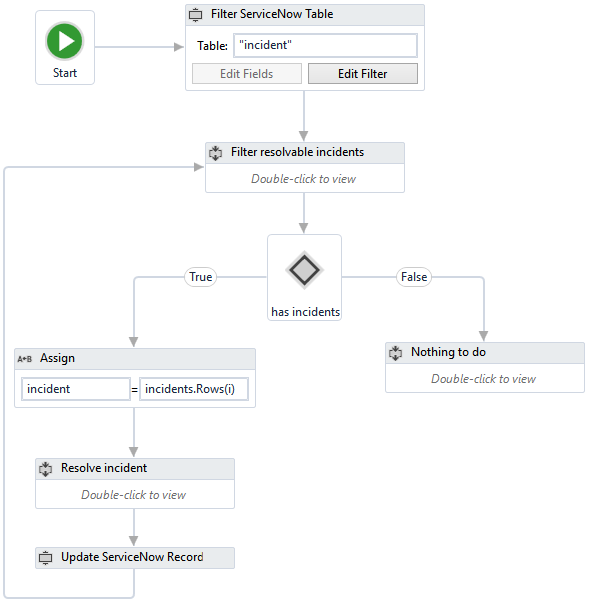Robotic Process Automation in ServiceNow
In today’s rapidly changing technology landscape, companies looking to expand their business are usually taking the first steps to digitalise their services and processes with the help of intelligent automation. The main goals of digital transformation are to improve productivity, increase service quality, and reduce costs. Transformation from the technology stand point typically consists of application integration, resource optimisation, and leveraging software at all levels of the organisation to boost productivity.
Using ServiceNow is a big step ahead in the corporate digitalisation journey that many of the large global enterprises have taken in the last decade. With the help of the ServiceNow platform, most of the enterprise service management processes can be automated and integrated with a large variety of external systems. Both automation and integration can, however, be a challenge even with the most advanced workflow engine and integration solutions.
Business and Technology Challenges
Our experience shows that most enterprises face challenges around the resourcing of their technology related business functions. For example, insufficient developer capacity or missing developer skills are common problems in the market.
Other typical problems include the continuously changing technology solution scenery and complexity as well as accessibility of legacy technologies used by large companies, such as mainframes.
The solution to these problems is Robotic Process Automation (RPA). RPA is a technology based on Software Robots and AI Workers that could use the user interface of any application just like human users whilst running in the background with hundreds or thousands of AI Workers in parallel.
Sofigate’s Solution
UiPath is a market leader in RPA technology, and it provides a robust solution for the problems described above. With UiPath Studio, a complex workflow can be created by simple visual programming. After analysing the UI structure of applications or web pages, the solution can identify the controls and interact with them whilst learning how to achieve increased efficiency. Moreover, with screen scraping, it is possible to do the same through virtual machines and remote desktop connections, potentially using an enormous number of threads in parallel and easily accessing applications built on any technology. So, for example, with the built-in terminal emulator, even legacy mainframe screens or console applications can be accessed, which are still commonly used by large enterprises.
Our Robotics as a Service (RaaS) Process Automation solution can execute processes in the cloud the same way as using ServiceNow. With that solution, there is no need for any change in the applications or infrastructure, and RPA workflows are easy to set up. The robots are trained by humans to perform user-interaction tasks, and with the help of AI, they can work autonomously with continuously improving efficiency.
And how does ServiceNow integration come into the picture?
UiPath can be trained to use the ServiceNow UI or use ServiceNow’s Table API through RESTful webservice calls using our solution called ServiceNow UiPath Connector, which was developed by Sofigate. The solution makes integration between ServiceNow and Robotic Process Automation easy to set up.
So, our solution combines are advantages of Robotics as a Service Process Automation – e.g. UiPath in the Cloud – plus our ServiceNow UiPath connector and related consultancy services will help customers take process automation to the next level.
The Value of our Solution
The solution can work highly efficiently, providing all the benefits described above, as the robots could achieve the following:
- work 24/7 and never get tired,
- execute actions much faster than humans,
- collect and analyse data to find bottlenecks and help smooth out workflows,
- complete those tasks that require less creativity, so that humans can work on more interesting assignments.
Solution Example
Here is a basic example of how the ServiceNow RPA solution works.
This simple robotic workflow example below does the following:
- grabs new ServiceNow records,
- selects records that the robot is programmed to process (in this example a password reset or a service restart),
- does the actual work,
- updates the record and sets its state to “Resolved”.



